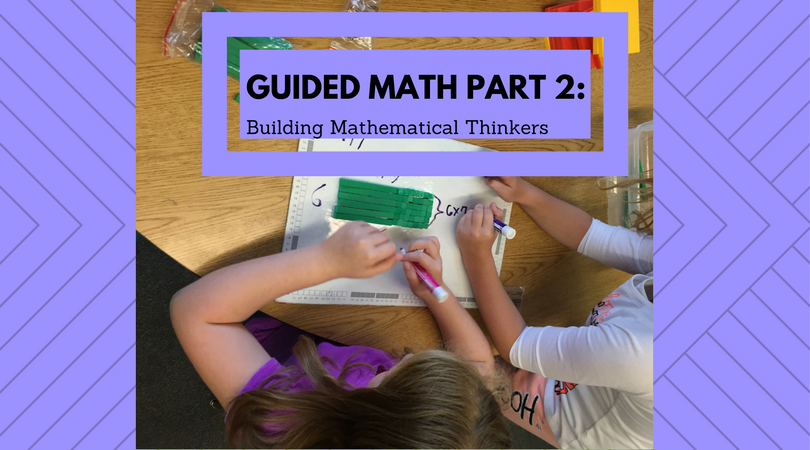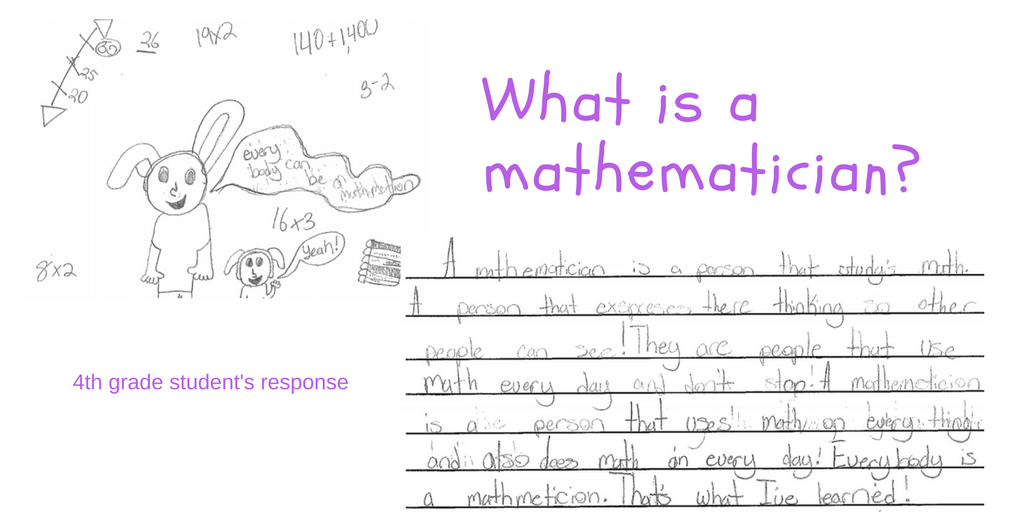
Guided Math Part 2: Building Mathematical Thinkers through Problem Solving
 A first grade student's journal. Students were asked to draw a picture and write a story problem to match.
A first grade student's journal. Students were asked to draw a picture and write a story problem to match.
Think back to your days as a student in the classroom. What was your environment like? How were the desks arranged? What sounds did you hear in the room? How did students react when it was time for math? What type of activities did you do during this time? What was the teacher's role?
For many of us, we have similar responses. I can remember sitting in rows, except when it was a special occasion we rearranged our desks into groups of four, or around the perimeter with everyone facing the middle, or, when we were really lucky, we were able to sit next to a partner of our choice. During math our classroom was quiet, the person who did the majority of the talking was the teacher. Students only responded with answers to questions. And, those answers were just numbers. If a student gave the wrong answer, she moved on to the next student until the right answer was given. Our work was very similar day after day, which was primarily textbook problems or worksheets. When I got older, I loved being assigned the "odd" problems because the answers were in the back of the book ...
If this experience is like yours, did you ever consider yourself a mathematician? Were you a "mathematical doer" or a "mathematical thinker"? As I discussed in the first post of this series, guided math is a framework. Most teachers are interested in using guided math in hopes it will improve math thinking and test scores; but, here's the point that often gets overlooked: if you implement a guided math framework, and continue to teach the same way, you will continue to get the same results. If you are looking for a change in scores, or even more importantly, a deeper understanding of math concepts from your students, then you need to look at how to shift your instruction. This shift is how we develop our students to become mathematical thinkers.
In our classrooms today, we want to promote a classroom of numeracy. We want our students to view themselves as mathematicians, who have mathematical freedom to solve problems in a way that makes sense to them. When we call on students, we don't want to only hear an answer; we want to hear why, how, or what thinking was used in solving the problem. Math shouldn't only be about the answer, but more focused on problem solving. Many students see problem solving as hard because they only use the words "problem solving" when they get to that chapter in their math book. When we shift our instruction, problem solving becomes embedded into every math lesson.
Start by modeling how to tell oral stories. If you are working on computation, take the numbers and the operation you want students to use, and put the problem into context. For example, let's use this problem: 763 - 584. Here's what I would say to my students:
Boys and girls, as you know we have been following the Dayton Flyer Men's Basketball Team. So far this season our Flyers have scored 763 points and their opponents have scored 584 points. I want us to figure out how many more points our Flyers have scored than their opponents. With your group, I want you to take this information and label the parts, the whole, and write an equation we could use to solve this problem.
By setting up the problem in this way, I am turning the learning over to my students. I want them working with each other to make sense of the numbers and the context which was presented. We know students learn more from each other, so we must encourage communication between mixed-ability students as often as we can.
Once students have had a chance to complete the above task, ask them to share with the class their thinking. You may have some eager beavers who wish to tell you they already know the answer. GREAT! Let them go ahead and share their predictions. Feel free to record these predictions so that you can check them later. This takes the pressure off from students wanting to tell you the answer while you are presenting the strategy you want students to practice.
Your students will love creating these oral stories as well. Once you've modeled this for them, allow them to create the stories. Not only is this practicing using numbers in context, it is also helping students to make real-world connections. For classwork or homework, reduce the number of problems students need to solve, but ask them to write each problem into a real-world situation. Now, when you get to the problem-solving chapter in your book, this isn't any different than what you've been doing every day!
During my guided math seminar, we spend a lot of time exploring this concept and looking at student work that reflects the possibilities of what can happen after we shift our instruction and promote numeracy-rich classrooms through a guided math framework. I would love to meet you in person at one of my locations! My first stop is next week in Memphis, TN. Check out my seminar registration page and upcoming events for dates and locations near you.
Until next week, when our focus will be, "Whole Group Instruction in the Guided Math Classroom", enjoy this week's "Plus-One":
My favorite first science lesson of the year was asking my students to draw and describe a scientist. Usually their pictures represented an older male with gray curly hair and glasses. Most had pictures of him wearing a lab coat and sitting at table with colorful chemicals in containers. After this lesson I had my students complete a science lab. We would then discuss how they were scientists during this lab and what skills and habits did they use during this time. Throughout the year we added to our chart, "What Is a Scientist?".
During my guided math seminar, I share this activity and ask teachers to do a similar activity with their students, but instead ask students, "What is a Mathematician?". My friend and colleague, Emily Kappel, did this activity with her fourth-grade students this year. I put the recording sheet, What is a Mathematician?, she created in the teacher resources page for you to use. Enjoy this response from one of her students. I would love to hear from you if you try this activity in your classroom! Please post your students' thoughts on my Facebook page, Making Math Make Sense.

